From Manual to Smart: Pallet Inverters Transforming Europe's Material Handling
Are you still handling pallets the old way? I see it all the time in factories across different industries. Workers manually restacking goods, forklifts making risky maneuvers to flip a load, and the constant, nagging risk of product damage or, even worse, employee injury. This manual approach is a hidden drain on your resources. It creates bottlenecks in your production line, drives up labor costs, and slowly erodes your profit margin. In today's competitive market, especially in demanding sectors like steel manufacturing, these small inefficiencies add up to a major competitive disadvantage. You are not just losing time; you are losing money and creating unnecessary risks.
A pallet inverter, or pallet changer, is a machine designed to solve this exact problem. It transforms European material handling by automating the process of transferring goods from one pallet to another. Instead of relying on slow, dangerous manual labor, these smart machines can securely grip a full pallet load, rotate it, and allow for the quick and safe exchange of pallets. This is crucial for exporting goods to meet specific pallet standards, handling damaged pallets, or switching to hygienic plastic pallets for cleanroom environments. This shift from manual to smart automation is not just about a new piece of equipment; it is a fundamental upgrade to your entire logistics workflow, boosting speed, safety, and efficiency.
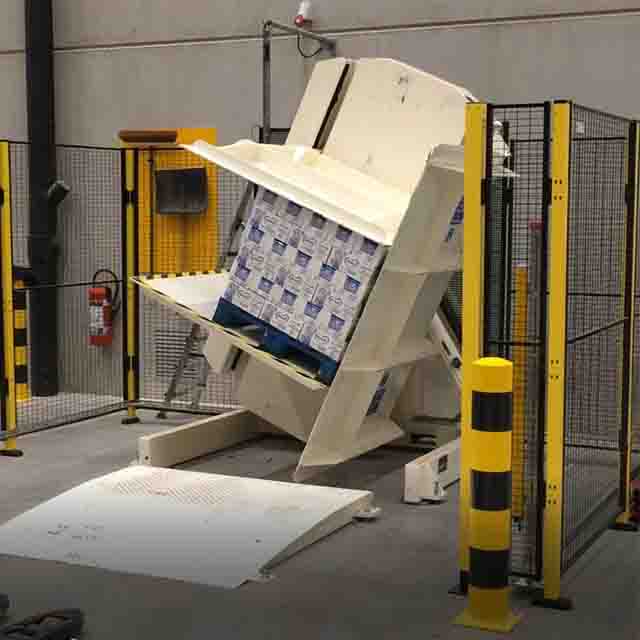
I have spent my entire career in the packing and handling industry. I started on the factory floor and eventually built my own company, SHJLPACK. I have seen firsthand how the right technology can change a business. The transition from manual labor to smart automation is one of the most impactful changes a company can make. It is not just about replacing people with machines. It is about creating a safer, more reliable, and more profitable operation. Let’s explore how these machines are making a real difference and what you need to consider before investing in one for your facility.
How do pallet inverters actually boost operational efficiency and safety?
Is your loading dock a scene of controlled chaos? Do you see teams of workers spending valuable time manually unstacking and restacking products just to switch out a broken or incorrect pallet? I've been in countless facilities where this is the norm. It is slow, it is physically demanding, and every single time a box is handled, there is a risk of it being dropped or damaged. The hidden costs are enormous. You are paying for labor that could be used for more valuable tasks, and you are losing money on damaged inventory. This process is a significant bottleneck that holds your entire operation back, creating delays that ripple through your supply chain.
A pallet inverter directly boosts operational efficiency and safety by mechanizing this entire process. It transforms a slow, multi-person, high-risk task into a quick, one-person, low-risk operation. By automating the transfer of goods, you drastically cut down the time required, from many minutes or even hours to just one or two minutes per pallet. This automation also removes the need for manual lifting, which is a leading cause of workplace back injuries. This means fewer worker compensation claims, less downtime, and a safer environment for your most valuable asset: your people.
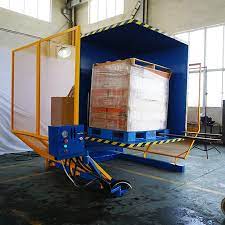
The Tangible Impact on Your Workflow
Let's get specific about the improvements. Think about the entire sequence of a manual pallet exchange. A forklift brings the pallet. One or two workers begin unloading the product, piece by piece, onto a new pallet. This requires careful stacking to ensure stability. Then, they have to wrap the new pallet. The entire process is full of potential errors. The new stack might be unstable. A worker could strain their back. A product could be dropped. A pallet inverter simplifies this into a few steps. The forklift places the pallet into the inverter. The machine clamps the load, rotates it, and allows the original pallet to be removed and a new one to be inserted. The machine then rotates it back. The whole cycle is fast and secure. There is no manual handling of the individual products. This direct replacement of a manual process with an automated one is the core of its efficiency gain.
Safety as a Financial Metric
We often talk about safety as a moral responsibility, and it is. But in business, it is also a critical financial metric. Every workplace injury has a direct cost. This includes medical bills, insurance premium increases, and lost productivity. I remember a client in the food and beverage industry. Before they installed a pallet inverter, they had two serious back injury claims in one year. The financial and administrative burden was immense. After installing a pallet inverter, their injury rate for that task dropped to zero. This did not just save them money; it improved employee morale. Workers felt valued and protected. When you create a safer work environment, you foster a more positive and productive culture. In Europe, adherence to strict CE safety standards is mandatory, and our machines are built to meet or exceed these standards, ensuring you are investing in a system that is fundamentally safe by design.
A Side-by-Side Comparison
To truly understand the difference, let's look at the numbers. The table below provides a clear comparison between manual handling and using a pallet inverter for a standard load.
| Metric | Manual Pallet Exchange | Pallet Inverter Exchange | Improvement |
|---|---|---|---|
| Time per Pallet | 15 - 30 minutes | 1 - 2 minutes | ~90% Faster |
| Labor Required | 2 Workers | 1 Operator | 50% Labor Reduction |
| Risk of Injury | High (Lifting, Stacking) | Very Low (Automated) | Drastically Safer |
| Risk of Product Damage | Moderate to High | Very Low | Significantly Reduced |
| Process Consistency | Low (Depends on workers) | High (Machine-controlled) | 100% Repeatable |
As you can see, the improvements are not small. They represent a complete change in how you handle this essential logistics task. This is how pallet inverters deliver a powerful and immediate boost to both efficiency and safety.
What is the real return on investment (ROI) for a modern pallet inverter?
When you look at a new piece of equipment, the first thing you probably see is the price tag. It is a significant capital investment, and as a business owner, you need to be certain it will pay for itself. It is easy to think, "My current manual system works, even if it's slow. Why should I spend this money?" This is a common and understandable concern. But clinging to an old, inefficient process has its own costs. These are the hidden costs of wasted labor, damaged goods, and production delays. These costs add up every single day. The real question is not just "What does the new machine cost?" but "What is my old process costing me every year?"
The real return on investment for a modern pallet inverter comes from several clear and measurable areas. You get your money back through direct savings in labor, a sharp reduction in product damage, and the elimination of costs associated with workplace injuries. For most high-volume operations, like those in the food, pharmaceutical, or manufacturing sectors, the payback period for a pallet inverter is surprisingly short, often between 12 and 24 months. After that point, the machine is no longer a cost center; it is a profit center, generating savings year after year.
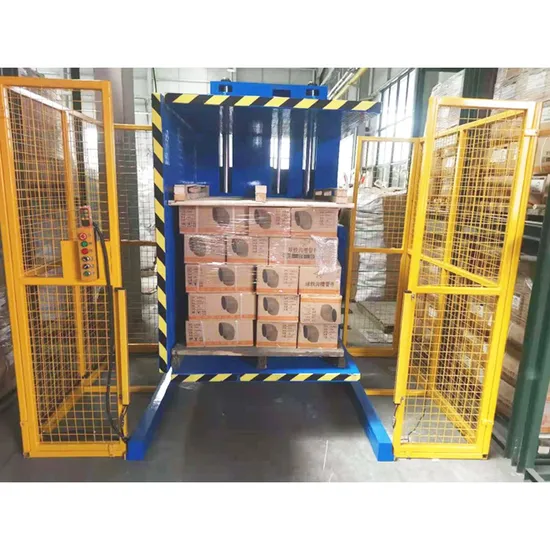
Breaking Down the Financial Gains
Let's move beyond general statements and look at the specific ways a pallet inverter generates ROI. This is the kind of analysis I do with my clients to help them justify the investment to their financial teams. First, consider labor. Calculate how many man-hours you currently spend per day on manual pallet switching. Let's say it's two workers for two hours a day. That is four man-hours. A pallet inverter can do the same work in about 20 minutes with one operator. You are saving over three hours of labor every single day. Multiply that by your hourly labor rate, and you have your annual labor savings. Second, product damage. Estimate the value of goods damaged during manual handling each year. Even a conservative 1% damage rate on high-value products can be a huge number. A pallet inverter can reduce this by 80-90% because the products are securely clamped and never handled individually.
Total Cost of Ownership (TCO)
A smart investor looks beyond the initial purchase price. You must consider the Total Cost of Ownership (TCO). This includes the initial cost, plus installation, training, maintenance, and energy consumption over the machine's lifespan. A cheaper, poorly made machine might save you money upfront, but it will cost you more in the long run. It will break down more often, leading to costly downtime. Replacement parts might be hard to find. It might not be as energy-efficient. I have always believed in building robust, reliable machines. My goal at SHJLPACK is to provide a solution with a low TCO. We use high-quality components and straightforward designs that are easy to maintain. This approach ensures that your investment continues to pay dividends for many years, instead of becoming a maintenance headache. We see ourselves as partners in your success, so we build equipment that lasts.
A Sample ROI Calculation
To make this concrete, here is a simplified example. The numbers will change based on your specific operation, but the logic is the same.
| Financial Metric | Calculation | Annual Value |
|---|---|---|
| Machine Investment | (Example Cost) | -$40,000 |
| Annual Labor Savings | (3.5 hours/day $25/hr 250 days) | +$21,875 |
| Annual Damage Reduction | (Reduced damage from $30k to $3k) | +$27,000 |
| Annual Injury Cost Savings | (Avoided insurance/comp costs) | +$5,000 |
| Total Annual Savings | $53,875 | |
| Payback Period | ($40,000 / $53,875) | ~0.74 Years (9 Months) |
This simple calculation shows how quickly a pallet inverter can pay for itself. The ROI is not a vague promise; it is a calculable outcome based on real operational improvements.
How do you choose the right pallet inverter for a high-throughput environment like a steel mill?
A high-throughput environment like a steel mill presents unique challenges. The loads are heavy, often irregularly shaped, and the operational pace is relentless. Downtime on any part of the line can cause massive disruptions and financial losses. You cannot simply choose a standard, off-the-shelf pallet inverter and expect it to survive. The dust, the temperature fluctuations, and the sheer weight of the products will destroy a machine that is not built for these conditions. I have visited steel plants where the wrong equipment was chosen. It resulted in constant breakdowns, safety hazards, and a machine that quickly became a piece of scrap metal in the corner of the warehouse.
To choose the right pallet inverter for a heavy industrial application, you must prioritize three things: robust construction, high load capacity with a safety margin, and a design suited for a 24/7 duty cycle. You are not just buying a machine; you are investing in a critical piece of your production infrastructure. You need a partner who understands the demands of your industry and can provide a solution that is engineered to last, not just to sell. It is about matching the machine's capabilities directly to your operational reality.
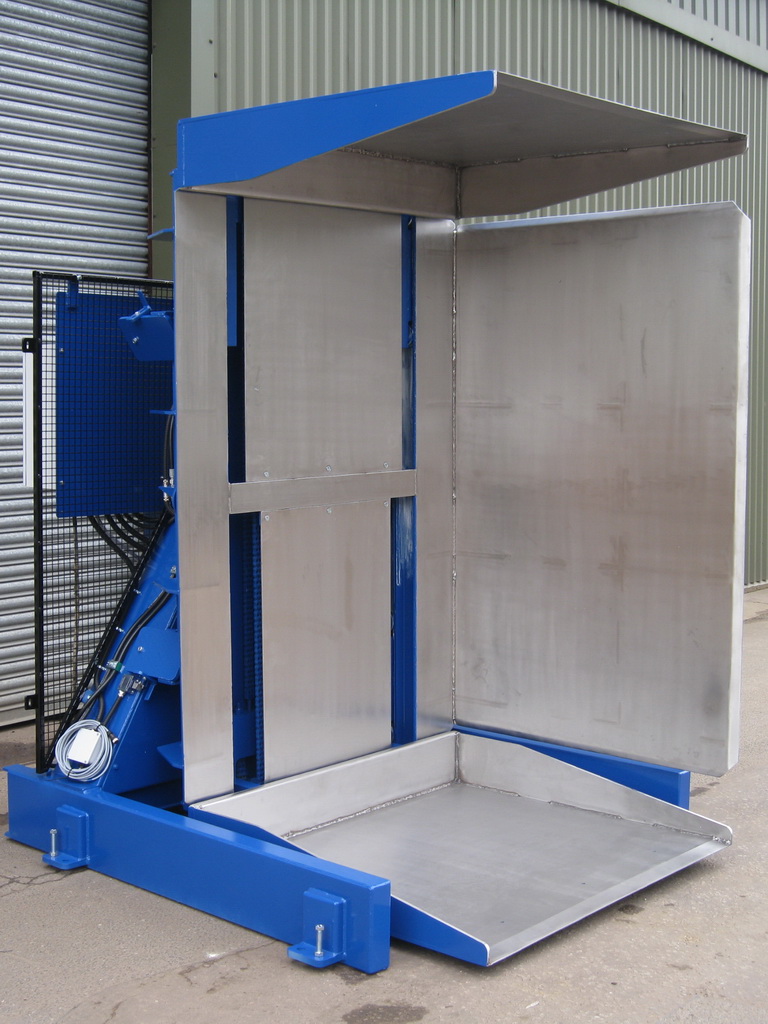
Engineering for Strength and Durability
The first thing to look at is the build quality. For a steel mill, this means a machine frame constructed from heavy-gauge, reinforced steel. Look at the welds. Are they clean and substantial? The clamping mechanism is also critical. It needs powerful hydraulics or robust electric motors to securely grip heavy and potentially off-center loads without faltering. The load capacity rating should not just meet your maximum load; it should exceed it by a healthy safety margin, perhaps 20-25%. This ensures the machine is not constantly operating at its absolute limit, which drastically reduces wear and tear on components like motors, bearings, and hydraulic cylinders. I learned early in my engineering career that over-engineering for durability is the key to longevity in harsh environments. It is a principle we apply to every machine we build at SHJLPACK.
Matching the Machine to the Workflow
You also need to consider how the machine will fit into your existing workflow. In a high-throughput setting, a stationary, in-line model is often the best choice. This type of pallet inverter can be integrated directly into a conveyor system. A pallet load can move automatically into the machine, be inverted, and then exit onto another conveyor without any forklift intervention. This creates a seamless, fully automated process that maximizes throughput. For other applications where flexibility is more important, a standalone, forklift-loaded model might be better. The key is to analyze your process flow and choose a design that eliminates steps, not adds them.
Key Features for Heavy Industry
The table below outlines critical features to look for when selecting a pallet inverter for a demanding environment like a steel mill or large-scale manufacturing plant.
| Feature | Standard Model | Heavy-Duty Industrial Model | Why it Matters for You |
|---|---|---|---|
| Construction | Standard steel frame | Reinforced, heavy-gauge steel | Resists twisting under heavy loads and withstands impacts. |
| Load Capacity | 1000-1500 kg | 2000 kg+ with safety margin | Safely handles heavy products like steel coils or engine blocks. |
| Duty Cycle | Intermittent Use | 24/7 Continuous Operation | Ensures reliability and avoids overheating during constant use. |
| Clamping System | Standard pressure | Adjustable, high-pressure hydraulics | Securely grips uneven or very heavy loads without slipping. |
| Controls | Basic push-button | PLC-based, integration-ready | Allows for automation and connection to factory control systems. |
| Environment Proofing | Open design | Sealed motors, protected wiring | Protects critical components from industrial dust and debris. |
Choosing the right pallet inverter is a technical decision. It requires a deep understanding of both the machine's engineering and your operational needs. By focusing on these key features, you can select a machine that will be a reliable workhorse, not a constant problem.
What does "smart" integration truly mean for pallet inverters and your existing workflow?
Many companies today are talking about "smart" technology and "Industry 4.0." These terms can be confusing. It is easy to assume a "smart" machine is just one with a digital touchscreen instead of analog buttons. But true smart integration goes much deeper than that. For a machine like a pallet inverter, "smart" means it stops being an isolated piece of equipment. It becomes a connected, data-generating asset within your larger factory ecosystem. It can communicate with your other systems, providing real-time information and receiving commands automatically. This is a huge leap from a machine that simply sits and waits for an operator to push a button.
"Smart" integration means your pallet inverter can connect directly to your Manufacturing Execution System (MES) or Warehouse Management System (WMS). It uses sensors to track its own performance—like cycle times, load weights, and motor status—and sends this data to your central platform. This allows for a level of automation and oversight that is impossible with a standalone machine. It is the key to unlocking true operational visibility and control, helping you move from reactive problem-solving to proactive, data-driven management.
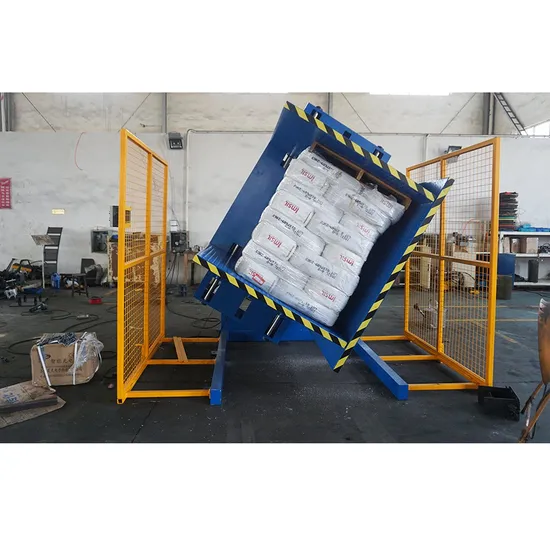
The Path to a Fully Automated Workflow
Think about the practical difference. In a non-integrated setup, a forklift driver brings a pallet to the inverter. An operator gets off the forklift, walks to the control panel, and starts the cycle. They wait for it to finish, then get back on the forklift to remove the load. In a fully integrated smart workflow, the process is seamless. An automated guided vehicle (AGV) or a conveyor delivers the pallet to the inverter. A sensor detects its arrival and signals the MES. The MES confirms the product ID and instructs the inverter to begin its cycle with the correct pre-set clamping pressure. Once finished, the inverter signals the MES, which then dispatches another AGV to pick up the completed load. The entire process happens without direct human intervention. This is the heart of smart manufacturing—using data and connectivity to make your processes faster, more reliable, and less dependent on manual coordination.
Turning Data into Actionable Insights
A smart pallet inverter is a source of valuable data. This is not just data for the sake of data; it is information you can use to improve your operations. This is something I am very passionate about, as it directly addresses the goals of forward-thinking leaders. For example, by tracking cycle times for every load, you can identify bottlenecks or see if a machine's performance is degrading over time. Most importantly, it enables predictive maintenance. Sensors can monitor the hydraulic pressure, motor temperature, and the number of cycles completed. Your MES can analyze this data and alert the maintenance team before a failure occurs. This is a game-changer. Instead of shutting down a line because a part broke, you can schedule maintenance during planned downtime. This is crucial for achieving goals like 95% equipment uptime.
A Phased Approach to Digitalization
Adopting smart technology does not have to be an all-or-nothing leap. It can be a phased journey. I often work with clients to develop a roadmap that makes sense for their budget and technical readiness.
| Integration Phase | Description | Key Benefit |
|---|---|---|
| Phase 1: Standalone Automation | The pallet inverter operates automatically but is manually loaded and activated by an operator. | Eliminates manual handling of goods, improves safety and speed. |
| Phase 2: Connected Monitoring | The machine is connected to the network and sends data (cycles, faults, status) to a central dashboard or MES. | Provides visibility into performance and enables predictive maintenance. |
| Phase 3: Full Integration | The machine receives commands from the MES and operates as part of a fully automated, end-to-end workflow with conveyors or AGVs. | Maximizes throughput, minimizes labor, and creates a true smart factory process. |
This phased approach allows you to realize immediate benefits at each stage while building towards a fully digitalized and optimized operation. Smart integration is not a futuristic concept; it is a practical tool that is available today to make your facility more efficient, resilient, and profitable.
Conclusion
Pallet inverters are a strategic investment in efficiency, safety, and smart manufacturing. They provide a clear path to lower costs and higher throughput, making your operation more competitive.




